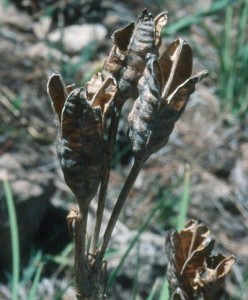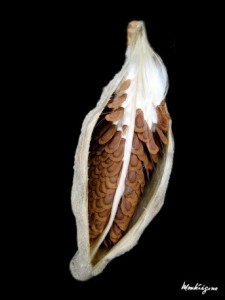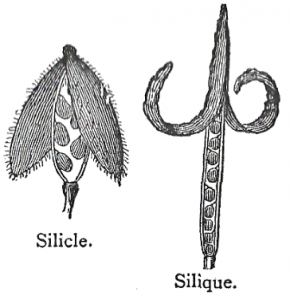YOUR DAILY DOSE OF BOTANY – MARCH 2013
Fruit Salad Part II
Scott Namestnik, snamestnik@orbisec.com
Last month, we looked at the three types of fleshy fruits. Remember that a fruit is the seed bearing part of a plant that consists of a mature ovary and sometimes additional flower parts, and that fruits can be fleshy or dry. Dry fruits can disperse seeds either by naturally breaking open to free the seeds (dehiscent fruits) or by remaining intact with the seeds inside the fruit after the fruit has been shed by the plant (indehiscent fruits). In this article, we will look at some of the types of dehiscent dry fruits.

© Lee Dittmann, www.nazflora.org
The most common type of dehiscent dry fruit is the capsule. A capsule forms from an ovary that has two or more carpels (remember that a carpel is a chamber within the ovary). Capsules dehisce in different ways. Some, such as those of poppies (Papaver spp.), have small openings near the top of the fruit where the seeds are dispersed. Others split along valves, such as in iris (Iris spp.).
When a capsule has a frame-like partition that separates the valves, it is considered either a silique or a silicle. When these types of fruit mature, the two sides of the fruit split, leaving the seeds attached to the persistent partition (known as the replum or septum). If the fruit is more than three times as long as its width, it is called a silique; a silicle has all of the characteristics of a silique but is up to three times as long as wide. Mustards (Brassicaceae) are known for having fruit that are either siliques or silicles.
Most people are familiar with the fruit of the milkweed (Asclepias spp.). This dry fruit consists of a single carpel, and to disperse seeds it splits only along one suture. This type of fruit is known as a follicle.

© Monteregina, www.flickr.com/photos/7196003@N02/4072494162
Legumes are characteristic of the pea or bean family (Fabaceae, formerly Leguminosae) and are similar to follicles except that they split along two sutures. An example is the fruit of wild lupine (Lupinus perennis).
Winter is a great time to see the remains of dehiscent dry fruits, so if you find yourself looking for something to do, go outside and see if you can find examples of some of these in your yard or garden.
If you have a question about plants that you would like answered in a future edition of this column, send me an email at snamestnik@orbisec.com. I may not be able to address all requests given the space allotted for this column, but I will answer those that I can.

